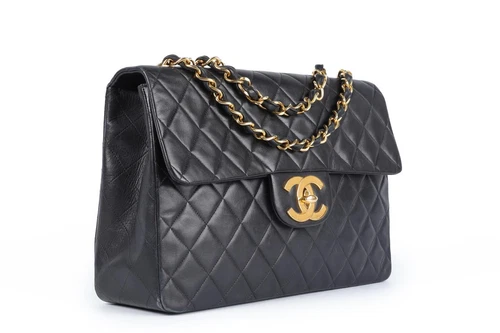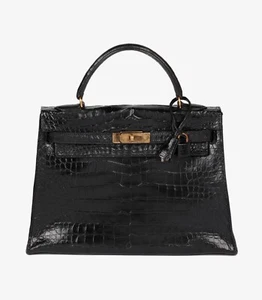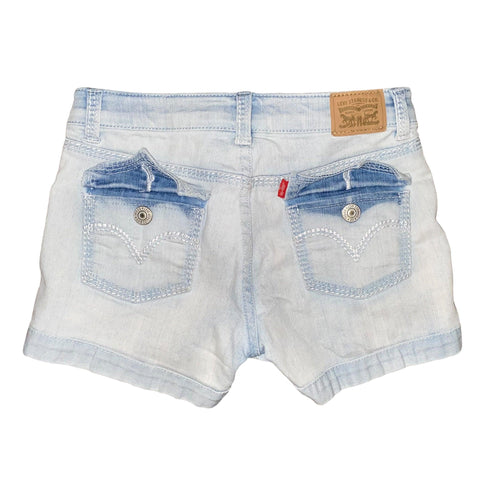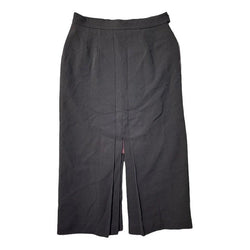Valuable Pre-owned Fashion & Vintage Luxury Brands
Luxury Vintage or other valuable (designer) secondhand clothing is at the intersection of sustainability, individuality, and investment.
In the UK and globally, the secondhand apparel market is booming, valued at $256 billion in 2025 and projected to grow by over $100 billion by 2029 (Statista, 2025).
This surge is driven by consumer demand for affordable, unique, and environmentally friendly fashion.
Understanding which vintage brands hold the most value is essential for collectors, resellers, and anyone seeking to make sustainable fashion choices.

The Value of Vintage: Why It Matters
Several factors shape the value of pre-owned clothing, wheater its luxury vintage or valuable premium brands.
Exclusivity and Rarity
Luxury vintage items that are hard to find or limited in production fetch premium prices (Meacham, 2016)2.
Heritage and Craftsmanship
Y2K and Luxury Vintage clothing brands known for quality and iconic design are usually higher prized.
Sustainability
Luxury Vintage fashion offers a sustainable alternative to fast fashion, reducing waste and extending garment lifecycles (Meacham, 2016)2.
Cultural and Social Value
Wearing luxury vintage or specific labels in demand, allows for individual expression and connection to fashion history.
A 2023 European survey found that affordability and environmental impact are the top reasons consumers buy secondhand fashion.
This furthermore is especially visible among younger buyers (Statista, 2025).
Vintage Clothing Market Growth & Consumer Trends
In the UK, 67% of millennials shop secondhand, and two in five items in Gen Z wardrobes are pre-owned (BBC, 2024).
The global secondhand apparel market is expected to reach $356 billion by 2029 (Statista, 2025).
Online platforms like Depop, which had over 640,000 monthly downloads in September 2024, have made vintage shopping more accessible than ever (Statista, 2025).
These platofrms are ideal to souce luxury vintage products, even though buyers should remain cautious regarding authenticity.
Key Motivations for Buying Vintage
Academic research highlights the following motivations for vintage shopping:
Nostalgia
Desire to connect with the past (Cervellon et al., cited in Meacham, 2016).
Uniqueness
Seeking one-of-a-kind pieces or limited edition of luxury vintage brands that stand out (Cassidy & Bennett, 2012, cited in Meacham, 2016).
Eco-Consciousness
Reducing environmental impact by reusing clothing (Shen et al., 2013, cited in Meacham, 2016).
Value for Money
High-quality vintage garments at accessible prices (DeLong et al., 2005, cited in Meacham, 2016).
Some vintage items confer status due to their exclusivity (Baker, 2012, cited in Meacham, 2016).
Most Valuable Vintage Clothing Brands: Evidence-Based List
Academic and market research identifies the following brands as holding enduring value in the vintage market:
| Brand | Valuable Features | Example of High-Value Item | |
|---|---|---|---|
| Chanel | Timeless design, craftsmanship, and iconic status | Classic tweed jackets, 2.55 handbags | |
| Hermès | Extreme rarity, luxury heritage, and investment value | Birkin and Kelly bags | |
| Levi’s | Durable denim, American heritage, and high resale demand | 501 jeans, 1970s trucker jackets | |
| Burberry | British heritage, signature trench coats, and luxury branding | Vintage trench coats, check scarves | |
| Vivienne Westwood | Punk influence, British design legacy, and limited editions | Corset tops, orb jewelry | |
| Yves Saint Laurent | Haute couture history, innovation, and celebrity association | Le Smoking jackets, Rive Gauche dresses | |
| Dior | New Look silhouette, luxury status, and collectability | 1950s dresses, Saddle bags | |
| Gucci | Italian craftsmanship, bold branding, and pop culture relevance | GG logo bags, 1970s loafers | |
| Prada | Minimalist luxury, durable materials, and high resale value | Nylon backpacks, 1990s accessories | |
| Nike | Streetwear influence, sneaker culture, and limited releases | Air Jordans, vintage tracksuits |
These brands are consistently referenced in both academic studies and market analyses as the most valuable for collectors and resellers.

Statistics: Vintage Fashion by the Numbers
67% of UK millennials shop secondhand, while 40% of Gen Z wardrobes are pre-owned (BBC, 2024).
The global secondhand market is worth $256 billion in 2025 and is projected to reach $356 billion by 2029 (Statista, 2025).
Depop had over 640,000 monthly downloads in September 2024 (Statista, 2025).
The value of the UK fashion resale market is expected to double to £2.76bn by 2027 (BBC, 2024).

Sustainability and Vintage Fashion
Vintage fashion is a sustainable choice.
By choosing vintage, consumers reduce demand for new clothing.
Ultimately, this helps to lower carbon emissions and textile waste (Meacham, 2016).
The cyclical process of vintage consumption—hunt, discovery, ownership, and new life —creates a sustainable model that challenges the fast fashion cycle (Meacham, 2016).
How to Authenticate and Invest in Vintage
Check labels and construction
Authentic vintage items often have unique tags and stitching.
Research provenance
Documentation and brand history add value.
Condition matters
Well-preserved items command higher prices (DeLong et al., 2005, cited in Meacham, 2016).
Vintage Market knowledge
Understanding trends and brand desirability is key for resellers.

The Future of Vintage: Trends and Predictions
The secondhand vintage clothing market is expected to outpace fast fashion in growth by 2030.
Increased digitalisation and global platforms will make it accessible to acquire vintage pieces that are not near me.
Sustainability concerns will continue to drive demand for pre-owned fashion, especially among younger consumers.
Final Take: Luxury Vintage Brands
To begin with, the luxury goods market experienced reserved consumer spending due to the global economic and political landscape, stated by Vogue Business (2024) online.
However, certain segments of this particular market are forecasted to grow at a rate of 4.7% from year 2025-2030 (Grand View Research, 2025).
The most valuable vintage clothing brands...
Vintage Chanel
Who doesn't know the famous Chanel flap bags, apart from its classic tailoring.
 CHANEL BLACK VINTAGE CLASSIC SINGLE FLAP JUMBO XL QUILTED LEATHER SHOULDER BAG
CHANEL BLACK VINTAGE CLASSIC SINGLE FLAP JUMBO XL QUILTED LEATHER SHOULDER BAG
Vintage Hermès
The world-wide known classical models among the exclusive Hermes bags are for example the Kelly Bag or the Birkin Bag. The secondhand market for these items are high due consumers experiencing a lack of options and general accessibility in the brand's stores (Fortune, 2024).

Vintage Levi’s
Levi’s vintage fashion, particularly iconic models like the 501 jeans, remains highly sought after in the resale and collector’s markets. Pieces from the early to mid-20th century—especially those with unique features such as WWII-era modifications or original arcuate stitching—can command extraordinary prices, with rare examples auctioning for over $25,000( (Jakobsen, 2025). Even more recent vintage Levi’s from the 1980s and 1990s are experiencing a resurgence, fueled by nostalgia and the growing popularity of Y2K and streetwear aesthetics. The market is driven by collectors and eco-conscious consumers, with consistent demand for authentic, well-preserved items. However, pricing can vary widely depending on rarity, condition, and current fashion trends, making it a dynamic and sometimes unpredictable market (Youtube.com, 2025).

Vintage Burberry
Burberry’s vintage market is thriving due to the brand’s timeless appeal, underscored by iconic pieces like the trench coat and classic check patterns (Counterfake, 2025 : Harpes BAZAAR, 2023) The return of these designs in recent collections has further boosted demand for authentic vintage Burberry items, with consumers valuing both the heritage and uniqueness of these pieces (Counterfake, 2025). Vintage Burberry trench coats are especially prized, often reselling for hundreds to thousands of euros, depending on age, condition, and provenance (Harpes BAZAAR, 2023: l’Étoile de Saint Honoré, 2022). The market is also influenced by a growing consumer preference for sustainable and unique fashion, but this increased demand has led to a rise in counterfeit products, prompting the need for robust brand protection measures (Counterfake, 2025).
Vintage items of these fashion houses combine heritage, craftsmanship, and sustainability.
The vintage market is set for continued growth, fueled by consumer desire for unique, eco-friendly, and investment-worthy fashion.
Collectors and fashion resellers who focus on these brands should understand the motivations and values of customers.
Catering specifically to vintage consumers will serve better chances of a well-positioned business in this thriving industry.
Reference List
BBC (2024) ‘The trendy second-hand clothing market is huge and still growing’, BBC Worklife, 5 March. Available at: https://www.bbc.com/worklife/article/20240301-international-second-hand-clothing-market-profitable [Accessed 3 June 2025].
Counterfake. (2025). Burberry’s Return to Iconic Designs: Vintage Products, the Counterfeit Market, and Counterfake’s Role. [online] Available at: https://counterfake.ai/blog/burberrys-return-to-iconic-designs-vintage-products-the-counterfeit-market-and-counterfakes-role/ [Accessed 10 Jun. 2025].
Grandviewresearch.com. (2024). U.S. Luxury Handbag Market Size | Industry Report, 2030. [online] Available at: https://www.grandviewresearch.com/industry-analysis/us-luxury-handbag-market-report [Accessed 10 Jun. 2025].
Jakobsen, M. (2016). Vintage Levi’s 501 Jeans - The Ultimate Collector’s Guide. [online] Heddels. Available at: https://www.heddels.com/2016/11/vintage-levis-501-jeans-the-ultimate-collectors-guide/ [Accessed 10 Jun. 2025].
l’Étoile de Saint Honoré. (2022). Preloved Burberry items | Étoile Luxury Vintage. [online] Available at: https://etoile-luxuryvintage.com/collections/burberry [Accessed 10 Jun. 2025].
Li, J. (2024). Birkin bags can double in value in 5 years. An Hermès expert explains why it’s a better investment than gold. [online] Fortune. Available at: https://fortune.com/2024/03/27/birkin-hermes-better-investment-than-gold/ [Accessed 10 Jun. 2025].
Meacham, S. K. (2016) ‘Vintage consumers, shared values, and the clothing consumption process’. University of Georgia. Available at: https://getd.libs.uga.edu/pdfs/meacham_samantha_k_201612_ms.pdf [Accessed 3 June 2025].
Shoaib, M. (2024). Luxury’s growth stutters as 50 million consumers pull back on spending. [online] Vogue Business. Available at: https://www.voguebusiness.com/story/consumers/luxurys-growth-stutters-as-50-million-consumers-pull-back-on-spending [Accessed 10 Jun. 2025].
Statista (2025) ‘Secondhand apparel market worldwide 2021-2029’. Available at: https://www.statista.com/statistics/826162/apparel-resale-market-value-worldwide/ [Accessed 3 June 2025].
Youtube.com. (2025). Available at: https://www.youtube.com/watch?time_continue=2&v=M-5k5DjY8eQ&embeds_referring_euri=https%3A%2F%2Fwww.perplexity.ai%2F&embeds_referring_origin=https%3A%2F%2Fwww.perplexity.ai&source_ve_path=Mjg2NjY&themeRefresh=1 [Accessed 10 Jun. 2025].


